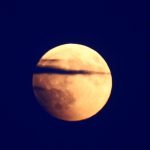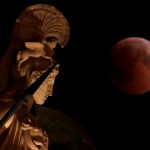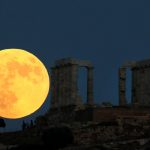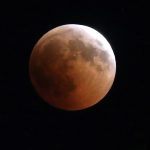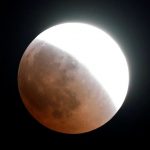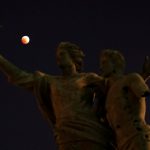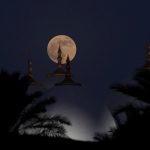Longest ‘blood moon’ of the century
 See stunning photos of the longest ‘blood moon’ lunar eclipse of the century that swept across the Eastern Hemisphere
See stunning photos of the longest ‘blood moon’ lunar eclipse of the century that swept across the Eastern Hemisphere
By Jeremy Berke Jul. 28, 2018, 4:58 PM
On the night of July 27 and the early morning hours of July 28, sky-watchers across the Eastern Hemisphere were treated to the longest lunar eclipse set to occur in the 21st century.
A lunar eclipse occurs when the sun, Earth, and moon are directly aligned, and the moon’s orbit brings it directly into Earth’s shadow. During the eclipse, the moon will pass through the darkest region of Earth’s shadow, known as the umbra, which will give the moon a reddish “blood moon” sheen.
The eclipse, which was visible across parts of Africa, Asia, and the Middle East, happened at the same time as the moon’s apogee — which is when the moon hits its furthest point from Earth in its monthly orbit.
The eclipse colored the moon orange-red due to sunlight passing through our planet’s atmosphere and bouncing off the moon.
See stunning pictures of the eclipse from around the world:
Skywatchers in Europe and Africa were first to see the fantastic eclipse.
A full moon rises behind the Temple of Poseidon before a lunar eclipse in Cape Sounion, near Athens, Greece, July 27, 2018. REUTERS/Alkis Konstantinidis
This particular eclipse occurred during what’s called a “micro” moon, or the opposite of a super moon.
A “blood moon” is seen during a partial lunar eclipse in Skopje, Macedonia July 27, 2018 REUTERS/Ognen Teofilovski
Source: Business Insider
This happens because the moon’s orbit isn’t perfectly circular, so it appears larger at times and smaller at others during its roughly 29-day-long orbit around Earth.
A full moon rises during an eclipse behind the statue of ancient Athena goddess in Athens, Greece, July 27, 2018. REUTERS/Costas Baltas
Source: Business Insider
While the eclipse wasn’t visible in North America, viewers in the Eastern Hemisphere were treated to a stunning lunar vista.
A full moon rises behind the Temple of Poseidon before a lunar eclipse in Cape Sounion, near Athens, Greece, July 27, 2018. REUTERS/Alkis Konstantinidis
The total eclipse lasted for one hour and 43 minutes, with the entire event, including the partial eclipse, lasting three hours and 55 minutes.
A full moon rises during an eclipse in Zenica, Bosnia and Herzegovina, July 27, 2018. REUTERS/Dado Ruvic
Source: Business Insider
It was certainly a dazzling display of color.
The moon is seen during a lunar eclipse over Cairo, Egypt July 27, 2018. REUTERS/Amr Abdallah Dalsh
If the eclipse looks stunning from Earth, it looks even more surreal to a viewer actually on the moon.
If the eclipse looks stunning from Earth, it looks even more surreal to a viewer actually on the moon.
The moon is seen during a lunar eclipse over Martyrs statue in Beirut, Lebanon July 27, 2018. REUTERS/Jamal Saidi
Source: Business Insider
A lunar eclipse of a full “Blood Moon” rises behind the Sheikh Zayed Grand Mosque in Abu Dhabi, United Arab Emirates July 27, 2018. REUTERS/Christopher Pike
But for most of us, this stunning view of the moon on our home turf is plenty sufficient.
The moon is seen during a lunar eclipse over Cairo, Egypt July 27, 2018. REUTERS/Amr Abdallah Dalsh
“This is what life is all about: Magical moments like this,” an onlooker in Kenya told Reuters. “It’s just beautiful. It’s well worth it.”
A lunar eclipse of a full “Blood Moon” rises behind the Sheikh Zayed Grand Mosque in Abu Dhabi, United Arab Emirates July 27, 2018 REUTERS/Christopher Pike
Source: Reuters

